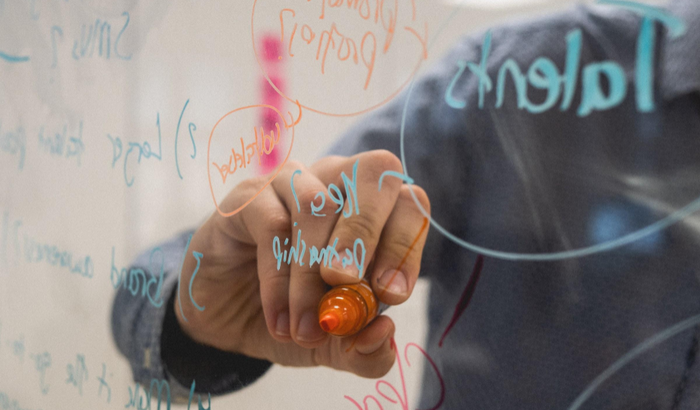ATLE Research and Innovation Grant Recipients well represent various aspects of the story of innovation in classrooms and districts here in Alberta.
For more information about their projects, please reach out to the contacts below.
If you can provide us with more information to add to the table below, please Contact Us!
| Year | Contact | Project |
| 2018-2019 | Nicole Lakusta, Parkland School Division | Woodhaven Multimedia Newsroom - Students at Woodhaven School develop their own storytelling voice, creating a community of writers while enhancing Woodhaven’s image internally and externally. |
| 2018-2019 | Jamie Poudrier and Laura Zarowny, via Nicole Lakusta, Parkland School Division | Create and Innovate Lab - The main goals of this project are to complement student learning, engage creative thinking and planning, promote collaborative projects between students in the classroom and the community, and to further develop technology literacy at Graminia School. |
| 2018-2019 | Angela Dearing, Wetaskiwin Regional Public Schools | Full STEAM AhED - WRPS will build an expanding lending library of equipment for transforming classroom teaching with technology and student-centred learning. Elementary teachers will include coding/computational thinking lessons in their routine classroom instruction. Students will graduate with desirable skills for entering post-secondary programs in the electrical and computer sciences. |
| 2018 - 2019 | Heather Rentz, Buffalo Trails Public Schools | Learning Is Electrifying with MakeyMakey! - This project incorporates more creative and project-based learning opportunities for students and teachers. Its goal is for students to demonstrate an increased ability to comprehend and solve basic problems through an application of science, technology, engineering and math skills using engaging hands-on activities. |
| 2019-2020 | Michael Krokosh, Lethbridge School District #51 | Augmented Reality Smart Globe Educational Technology - To increase student engagement in learning outcomes related to Geographical Thinking, and Critical Thinking, this grant allowed LSD to purchase a smart globe for every Elementary & Middle School in the District to leverage its engaging and beneficial technology integration opportunities. |
| 2019-2020 | Rob Melenchuk and Heather Howe, Red Deer Catholic | Design Thinking with Laser Cutting - To improve student’s awareness of the design thinking process, programs used for digital design and technology allow students to gain technology skills, which in turn teach authentic career fabrication skills. |
| 2019-2020 | Chad Starko, STAR Catholic | Empower Students for the Future with Micro:Bits - Students will use the design thinking process to creatively solve current and future real-life problems in order to make the world a better place. |
| 2019-2020 |
Thérèse DeChamplain-Good, Paul Corrigan and Brian Wynder, Elk Island Catholic |
Shareable Assurance Dashboard - “Dashboard in a Box” - We hope to deliberately construct a dashboard and back-end support documentation which could be easily shared with other school boards. A tool such as the Assurance Dashboard can bring value to an organization seeking to make their data more “useful” in decision making. |
| 2020-2021 | Shannon Walker and Howard Smith, Golden Hills School Division | The purpose of this project is to determine the effectiveness of the Starlink service in leveling out bandwidth inequalities between rural and urban environments. |
| 2020-2021 | Cordalee Fiveland and Julian Moore, Wetaskiwin Regional Division | To incorporate 3D printing into Grade 7 and 8 technology and science classes. |
| 2021-2022 | Sue Mylde, Rundle College | Virtual reality in education project |
| 2022-2023 | Heather Van Streun, Elk Island Catholic | Integrating Matalab Tale-Bots into teaching and learning -
Through collaborative active inquiry, grade 1 and 2 students write and bring their original story to life through the use of Tale Bots to learn the key elements of a story, engage in the design thinking process, apply computational thinking, collaborate and continue to build relationships. By integrating the Tale-Bots, teachers develop their own understanding of how to leverage technology to improve student learning and engagement. |
| 2022-2023 | Red Deer Public TBC | Esports project |
We are still fine-tuning this page. Please let us know if you see needed edits here. We might be off a year on your grant award date! Keep in mind that the year indicated here is the year the grant was awarded, so the following year would be the year the actual project was completed.


